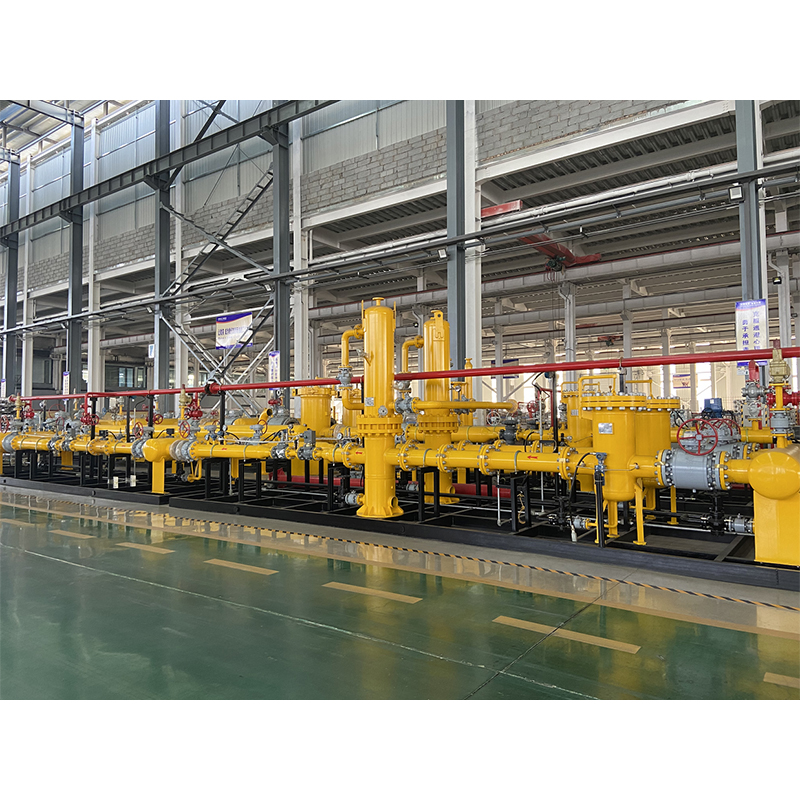
Dec . 11, 2024 09:19
Back to list
Understanding Pressure Reducing Regulators and Their Importance in Fluid Control Systems
Understanding Pressure Reducing Regulators An Essential Tool for Fluid Control
Pressure reducing regulators, commonly referred to as pressure regulators, play a pivotal role in various industrial and commercial applications where controlling fluid pressure is crucial. These devices automatically reduce and maintain a desired outlet pressure, despite fluctuations in the inlet pressure and flow rate. Their usage spans across multiple sectors, including gas distribution, water treatment, and manufacturing processes, showcasing their versatility.
At its core, a pressure reducing regulator functions by exerting control over the pressure of a fluid—be it gas or liquid—flowing through a system. The primary components of a typical regulator include a valve, a diaphragm, and an adjustable set point mechanism. When the inlet pressure exceeds the desired outlet pressure, the diaphragm moves in response to the pressure differential. This movement adjusts the valve opening, thereby decreasing the flow until equilibrium is achieved at the set pressure.
One of the most common applications of pressure reducing regulators is in natural gas distribution systems. Gas companies use these regulators to ensure that gas is delivered to homes and businesses at a safe and usable pressure. Without pressure regulation, fluctuations in gas pressure could lead to dangerous situations, such as gas leaks or appliance malfunctions. By maintaining consistent pressure levels, regulators not only enhance safety but also improve the efficiency of gas-fired appliances.
In addition to gas applications, pressure reducing regulators are also vital in water systems, particularly in municipal water supply and industrial processes. Water pressure can vary significantly depending on consumption levels and infrastructure conditions, potentially damaging pipes and equipment. By installing pressure reducing valves, municipalities can provide a stable water supply, reducing wear and tear on plumbing systems and extending their lifespan. In industrial settings, these regulators ensure that machinery operates within designed pressure ranges, thereby optimizing performance and reducing maintenance costs.
pressure reducing regulators

The selection of a pressure reducing regulator involves several considerations, including the type of fluid (gas or liquid), desired outlet pressure, flow rate requirements, and environmental conditions. Additionally, factors such as the materials used in the construction of the regulator play an essential role in its compatibility with the fluid being regulated. For example, corrosive fluids may require regulators made from stainless steel or other specialized materials to prevent degradation over time.
Pressure reducing regulators are engineered for reliability and longevity, often featuring robust designs that minimize the risk of failure. Regular maintenance checks are advisable to ensure that they operate efficiently. A well-maintained regulator can significantly enhance system performance by preventing pressure surges that could lead to catastrophic failures.
Furthermore, advancements in technology have led to the development of smart pressure regulating devices. These modern regulators can be integrated with monitoring systems that provide real-time data on pressure levels, allowing for proactive management and adjustments. This technological evolution not only improves safety but also supports energy efficiency initiatives by reducing wastage.
In conclusion, pressure reducing regulators are indispensable components in fluid management systems. Their ability to provide consistent pressure control enhances the safety, efficiency, and longevity of various applications, from gas and water distribution to intricate industrial processes. As industries continue to evolve and prioritize safety and efficiency, the importance of pressure reducing regulators will undoubtedly grow, cementing their place as essential tools in fluid control. Whether you are in engineering, manufacturing, or utilities management, understanding the function and benefits of these devices is crucial to effective operational practices.
Latest news
-
Safety Valve Spring-Loaded Design Overpressure ProtectionNewsJul.25,2025
-
Precision Voltage Regulator AC5 Accuracy Grade PerformanceNewsJul.25,2025
-
Natural Gas Pressure Regulating Skid Industrial Pipeline ApplicationsNewsJul.25,2025
-
Natural Gas Filter Stainless Steel Mesh Element DesignNewsJul.25,2025
-
Gas Pressure Regulator Valve Direct-Acting Spring-Loaded DesignNewsJul.25,2025
-
Decompression Equipment Multi-Stage Heat Exchange System DesignNewsJul.25,2025

